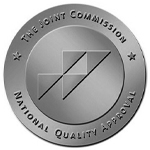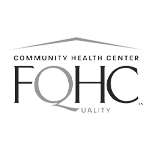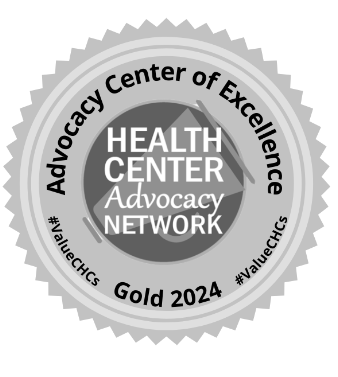

In the United States we have a problem with food. Our obesity rates continue to rise, and even those who are in a healthy weight range often don’t have a healthy relationship with food. Fad diets, highly processed meals, a culture of convenience and a lack of understanding about the importance of food choices for nutrition all play a role. Studies have attempted to explain some of these issues by measuring the addictive properties of food.
Dr. Rebecca Patterson and Dr. Michael Gaudiose of Keystone Family Medicine want their patients and the community to understand the impact a bad eating pattern can have on overall health. They shed light on the topic of food addiction and give tips about how to curb sugar cravings in today’s “Take Care” article.
Food Addiction
There is still scientific debate about whether people who have an unhealthy relationship with food (such as those who binge-eat and even those who have strong emotional ties to food) are truly addicted to food. But there is agreement that certain foods stimulate the brain’s reward pathways similar to the stimulation caused by drugs. The opioid and dopamine chemicals (which are both part of the brain’s reward system and allow us to enjoy something and then also to want more of it), can be released by both nicotine and by highly palatable foods. Highly palatable foods are those which are rich in sugar and/or fat, and are usually processed.
In lab studies it has been observed that when rats are given a sugar solution they will binge eat it and show signs of withdrawal when it is taken away. They will also go to greater lengths to get the sugar solution, including enduring a shock, than the rats that were given addictive stimulant drugs. Also, mice will actually choose sugar over cocaine in experiments looking at the addictive properties of sugar.
Given all of this evidence about the brain’s reaction to processed foods, it is no wonder people are struggling in today’s food environment where these foods are more available than ever before, and in much higher quantities.
Cravings vs. Addiction
Most people experience food cravings from time to time, and it’s especially common in pregnant women. The cause for food cravings is still a mystery, but they can sometimes be a sign that you are lacking something in your diet. For example, if you are craving chocolate it can be a sign that your body needs more magnesium.
With a craving, once you eat that chocolate, that bowl of ice cream, or whatever food you were hungry for, you are satisfied for a while and don’t need to keep eating it or have it every day.
Food addiction, however, takes it a step further. An unhealthy relationship with food develops and food changes from something that fuels our bodies to function efficiently to something that harms us and makes us sick. Unlike someone who is addicted to drugs or alcohol, you cannot “quit” food. You need to have a relationship with it in order to survive.
How to Curb Sugar Cravings
Stress, fatigue, diet and more play a role in your body’s hormones, which affect your relationship with food. If you find that your relationship with food is unhealthy, whether it is over-eating, binge-eating, consuming too many processed or sweetened foods, etc., it’s important to first recognize that you want to make a change. Make an appointment with your healthcare provider to discuss what type of changes will be beneficial to your health as well as a plan that you can maintain long-term. They may suggest a short-term eating plan to reset your cravings, but don’t fall for the temptation of doing a “quick fix” diet to lose pounds fast. Most people will gain back the weight after the diet is over. It’s best to find healthy practices you can incorporate into your daily life so you can maintain a healthy weight long-term.
When you are eating foods that are heavy in carbs and sugar, your insulin levels rise and your body tends to store fat and crave more sugar. But if you try to cut out sugar completely, your body will have an even stronger craving reaction. Instead of focusing on completely eliminating sugar or high fat products from your diet, try paying attention to healthier options that you could have instead that have not been processed and will still satisfy your cravings.
Dark chocolate is a healthy and satisfying treat. If you prefer milk chocolate, try to be open to the idea that you may begin to appreciate the dark stuff after less overall sugar in your diet and after trying it a few times. Tastes change over time and you may notice a difference once your body gets used to having less sugar.
For sweets that you bake at home, try replacing some of the sugar with dates or other fruit. You may be surprised by how sweet they are! Artificial sweeteners can be used in moderation, but keep in mind there is evidence they lead to more sugar cravings and increased daily calorie consumption as well as impacting the biome (the good bacteria in your body that plays a role in metabolism and weight). These are found in diet sodas and flavored waters, so don’t be fooled into thinking these drinks are healthy beverage choices or a good replacement for plain old water.
Instead of sugar, try adding cinnamon, ginger or vanilla to your food or beverage. This can help increase perceived sweetness without the sugar. Also, try roasting vegetables and sweet potatoes – this brings out the natural sugars in these healthy foods and satisfies some of that craving while leaving the healthy fiber and nutrients intact so your body can absorb them best. It is very easy to prepare food this way, which is a plus for busy families! Fruit is also a great snack to satisfy a sweet tooth while adding nutrients and fiber to your diet.
In the next “Take Care” article, we will be talking about how our current environment and culture affect our health and well-being, and give more tips for healthy eating.
This article contains general information only and should not be used as a substitute for professional diagnosis, treatment or care by a qualified health care provider.




